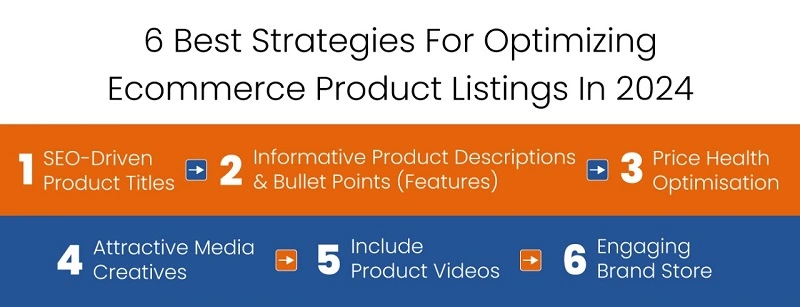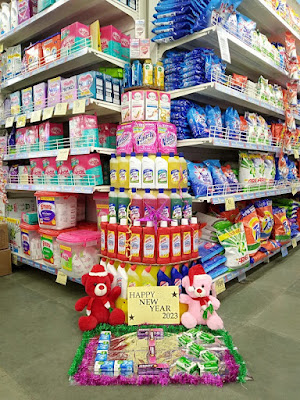A/B Testing Product Listings: How to Find the Winning Formula
In today's dynamic e-commerce world, where competition is tight, getting the best ecommerce product listing that actually converts shoppers into buyers is of prime importance. And one such strategy that allows finding a winning formula for your product listings is A/B testing, also known as split testing. Testing two or more versions of a product page and analyzing the results might help identify what resonates best with your audience, thereby helping you possibly improve the overall conversion rate. The blog guides you through the process of A/B testing on product listing and the best combination.
What is A/B Testing?
Essentially, A/B testing is presenting two different variations of a product listing to different audience segments and later analyzing data to determine which one works better in terms of some specific metrics predefined in advance by the click-through rate, conversions, or time on the page. This helps in deriving actual decision-making by reducing assumption or guesswork.
The major elements you'd be wanting to A/B test with a product listing are:
Product Title:
The first thing that is viewed when a customer clicks on the product offered at an online marketplace is generally the product title. Thus, we can change versions of it to use differently - structured keywords or emphasized features or benefits.
Example: "Wireless Noise-Cancelling Headphones" vs. "Premium Noise-Cancelling Wireless Headphones for Clear Audio"
Product Description:
Test short and long descriptions. Use bullet points vs. paragraphs, or different tones - technical versus conversational
Example: Descriptions that are heavy on technical specifications versus those that focus on lifestyle benefits of the product.
Images/Videos:
Test different images, e.g. use lifestyle shots instead of showing just the product 360 view or add demo video of the product.
Example: Product in use photo Vs. enlarged close-up product picture
CTA button texts, location, appearance:
Test the text for CTA buttons ("Add to Cart" or "Buy Now") in varied places and appearances.
Pricing Display: Experiment with how you show pricing including handling discounts, strikethrough of original price or having an installment payment option.
Example: "$49.99" vs. "$49.99, previously $69.99" or "Pay in 4 installments of $12.50"
Shipping Information:
Test where and how shipping information is being presented. Poorly presented shipping information causes cart abandonments in huge numbers.
Example: Instead of "Free shipping on orders over $50," change it to "Free shipping calculated at checkout."
How to Conduct a Successful A/B Test
In order to ensure that your A/B test will produce valid results do the following:
Step 1: Define Your Goal
What are you trying to achieve by the test? Are you looking to raise the click-through rate, increase your conversion rate, or improve your cart abandonment? Set a goal so you have something to measure success from.
Step 2: Select One Variable to Test
While you would wish to probe several factors within one trial, you need to make only one alteration at a time. In doing so, you will isolate the effect of a given change and hence come up with more reliable conclusions.
Step 3: Segment Your Audience
Split the target market into two or more groups randomly. Let each group be big enough so that statistically significant results may come out. Present to each group a different version of the product listing and monitor their behavior.
Step 4: Results Analysis
Record the performance of each version using metrics such as conversion rate, time on page, bounce rate, or revenue. You can use tools such as Google Analytics or platform-specific A/B testing tools like Optimizely or Google Optimize to track those.
Step 5: Implement the Winning Version
Once you identify what is performing better, replicate the same change to your product listing. And in case it brings forth significant improvements, roll out the winning formula across all your products and their online listings.
Ecommerce A/B Testing Best Practices
In order to make sure that you get the best out of your A/B test, you must remember the following best practices:
Continuously Optimize: Optimization is always a continuous activity. Periodically test various dimensions of your product listings for being aware of the trends and preferences of your customer.
Use Statistically Relevant Data: Make sure that the run is sufficiently large to generate meaningful data. A population size too low will result in erroneous inferences.
Rethink Seasonal Effects: If you tested over a holiday season or other peak season, consumer behavior might be different. Be very mindful of interpreting results when holidays are over.
Use Heatmaps: Tools like Hotjar allow you to understand customer interaction on your product page, such as where they click and how far they scroll. That can give you a starting place on things to test.
Do Not Neglect Qualitative Data: After you put the metrics aside, hear what your customers are saying in the review or from the surveys to understand why one version of it worked better than the other.
Example of Real Life of A/B Testing
A home decor brand A/B tested its product titles to see if emphasizing material quality over price would impact conversion. It came up with two versions of the same listing, which are as follows:
Version A: "Affordable Wood Dining Table – Sturdy and Modern"
Version B: "Dinner table Top grade Solid Oak, hand-made excellence"
They concluded after a test over two weeks that Version B had a higher conversion rate by 22% than Version A. Well, that surely says that customers are after substance and workmanship, and to be making high sales the brand must be focusing on the product's quality over low cost.
A/B testing is one of the most critical optimization paths for your ecommerce product listings and for finding what really floats your audience's boats. By systematically testing and refining titles, descriptions, images, and CTAs, you can constantly improve your listings-and better yet, drive more conversions for them. Love In Store (LIS) helps brands cut through the noise of ecommerce optimization to help brands nail every detail for the greatest possible effect. And with our expertise, your product listings can really reach the maximum potential and deliver what you need to be ahead in this competitive ecommerce marketplace.



Comments
Post a Comment